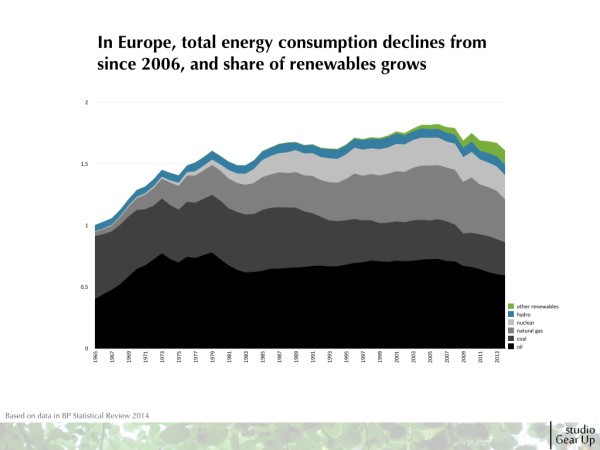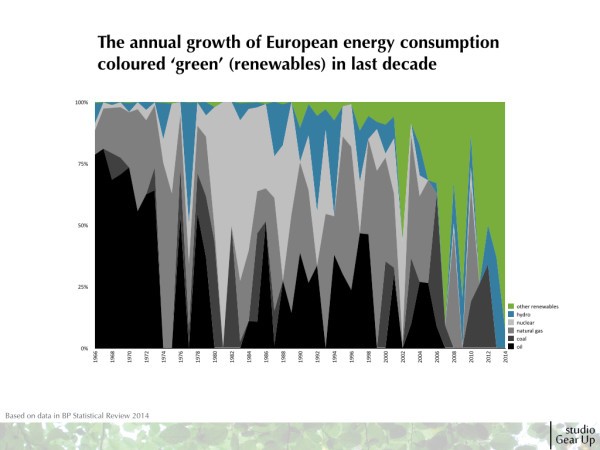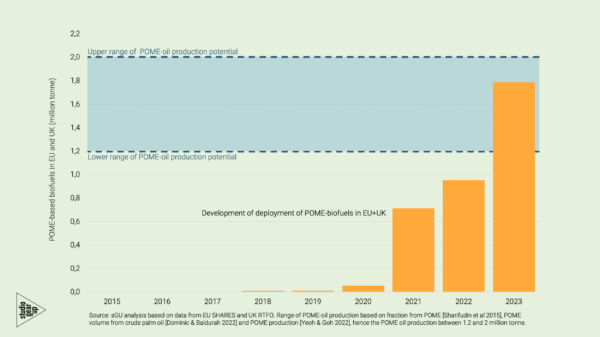The strong dominance of fossil resources (share-wise) in energy consumption can make it easy to overlook the disruptive changes that are taking place in today’s energy landscape: for more than a decade now, total energy consumption has been going down in the European Union – at the cost of fossil fuels. Only renewable based energy consumption is growing. Energy consumption from renewabe resources (solar, wind, geothermal, bioenery) shows a hyperbolic curve – flat from 1965 to the end of the 1980s, curving in the 1990s and going steep up in share in this century. In 2014 the combined hydro and other renewables energy consumption bypassed nuclear and has climbed to 75% of the coal based consumption level.
Energy consumption from renewabe resources (solar, wind, geothermal, bioenery) shows a hyperbolic curve – flat from 1965 to the end of the 1980s, curving in the 1990s and going steep up in share in this century. In 2014 the combined hydro and other renewables energy consumption bypassed nuclear and has climbed to 75% of the coal based consumption level.
The graph below presents which resources fueled growth in a given year compared to the year before. Oil, gas, to a lesser extent coal, and in the 80s nuclear were the resources used for energy consumption growth – up to 2004. From that year on dominancy has been taken over by hydro and other renewables.
The COP21 conference in Paris is approaching and the EU 2030 energy and climate targets are set – as well as the low carbon economy vision for 2050.
It is clear which ‘colour’ will dominate Europe’s energy landscape in the decades that come.



